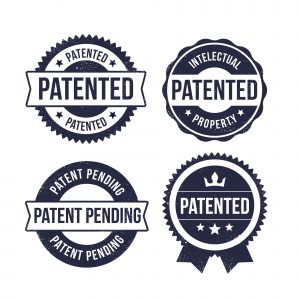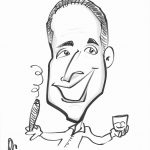
First-Time Patent Applications – Essential Questions And Answers
INTRODUCTION
First time patent applicants are never quite sure what information they need to know.
It can be very challenging for first time applicants to obtain useful information.
It can be even more challenging to know what questions to ask and when to ask them.
This article aims to break down the process in detail and provide first-time applicants with a resource of basic information.
INTELLECTUAL PROPERTY TYPES
The first thing to understand is whether a patent application is relevant for an individual’s need.
This involves understanding two main topics.
The first relevant topic relates to identifying what type of intellectual property is applicable.
Depending on which country you are dealing with, different terms or names may be applicable.
In Canada, a patent relates to inventions, be they apparatus, methods, or systems.
An equivalent form of protection in the United States would be called a “utility patent”.
The word “utility” denotes that the patent relates to protection a functional solution to a problem.
This can be contrasted by what Americans refer to as a design patent.
Design patents relate to protecting shape, ornamentation, and configuration.
In Canada, design patents are called Industrial Designs.
Thus, a first-time patent applicant would need to determine, or at least ask an agent about what type of protection they should seek.
If a first-time patent applicant wants to protect a functional solution, they should vie for a utility patent.
If a first-time patent applicant wants to protect shape, ornamentation, or configuration, they should vie for a design patent.
In Canada, the relevant terms would be just patent and industrial design respectively.
PATENTABILITY TEST
The second relevant topic relates to identifying whether an invention exists.
What does that mean?
A patent application must determine whether their invention generally qualifies for patent protection.
There are numerous steps in making this determination.
However, generally to qualify for patent protection a patent applicant must demonstrate three things.
First, an invention must be new, meaning it is not previously known to the public.
Second, an invention must be useful, meaning the invention solves a problem in the manner you claim the problem is solved.
Third, an invention must not be obvious (in Europe this is referred to as an “inventive step”).
How does the patentability test break down?
The first arm of the test is novelty.
Novelty means that the invention must not have been previously publicly known.
To attempt to patent an invention already known is nothing more than mere plagiarism, and lacks inventiveness.
Novelty is generally measured by assessing printed or published documents (and in today’s age, even video).
Realistically however, novelty is largely measured by a patent office with reference to a series of patent databases.
There are numerous patent databases available for many countries, and most patent offices have access to numerous sophisticated databases.
Patent offices can assess a patent application and research if the invention is novel in relation to prior patent applications and grants.
The job of any patent office is to thoroughly search patent records in a relevant art area.
In performing this search, the Patent Office is looking for a single publication or source that discloses the subject invention.
The Patent Office will, in any search, produce at least one document of arguable reference, in most cases.
This does not mean that novelty is destroyed for every patent application in every instance.
The Patent Office merely seeks to find the most relevant of prior art, and then it remains for a patent agent to argue ultimate patentability.
It is important to remember patentability relates to patent claims – the words reflecting how an invention is stated or phrased.
The second arm of the test for patentability is utility.
Patent application claims must have utility, meaning your claim must be for a functional solution to a problem.
Further on in this article, we explain what claims are.
The idea behind a utility patent application is that what is protected is a solution to a problem, and so that solution must truly be functional.
You cannot obtain a patent grant unless you disclose a working solution to a problem.
It should also be noted the problem need not be super-complicated – the problem only need be identifiable and reasonable.
The third arm of the test for patentability is, what is referred to as, non-obviousness.
What is, and what is not obvious, is a matter of debate.
An example we often use is as follows.
Imagine you are living in the 14th century and graphite pencils are in reasonably common use.
Also, in the 14th century it is known that rubberized tree sap can be used to rub against, and erase graphite pencil marks from paper.
An inventor approaches you and states they have an invention whereby they have attached a piece of rubber onto one end of a pencil.
The other end of the pencil is sharpened for writing.
Is this pencil-eraser combination obvious given we already know pencils and erasers separately?
This depends on who you ask.
A first person will argue this is obvious because this is nothing more than a mere combination of existing parts with no unexpected result.
A second person will argue there is an unexpected and non-obvious result.
When the two pieces are separate, an error is erased by the following steps.
First, a user releases a pencil from their hand.
Next the user picks up an eraser and erases whatever pencil marks are desired.
Next the user puts the eraser down and picks up the pencil again, and then re-starts writing.
With the invention however, the steps change.
With the pencil-eraser combination, the steps for erasing marks are as follows.
Upon discovering an error, the user first flips the pencil in the same hand without placing the pencil down.
The user then erases any desired pencil marks.
Thereafter the user flips the pencil in the same hand again, reverting into a writing position.
The invention resulted in the pencil and eraser combination never leaving the user’s hand.
It is very arguable that this is not obvious.
Thus, in the 14th century, a combination pencil and eraser would likely have been patentable under today’s standard.
PRE-PATENT APPLICATION
It is important to remember that the patent application process is one of “just because you ask does not guarantee you get”.
Before filing a patent application, applicants often want to know what the odds are of obtaining some type of patent protection.
While no-one can offer 100% guarantees, patentability searches can be performed to roughly assess odds of patentability.
Professional patentability searches are available and usually range in cost from one thousand US dollars onward.
Searchers comb through patent databases and retrieve relevant patent applications and patent grants.
A patent agent then compares the search results against the subject invention, to determine what differences exist.
PATENT APPLICATION PARTS
If a patent agent determines the subject invention may be patentable, a client may opt to file a patent application.
A patent application contains different parts.
A patent application usually contains formal black ink drawings.
Apart from drawings, a patent application must have a description, claims, and abstract.
The description must thoroughly describe in writing how to produce the subject invention.
The claims must state in writing a scope of protection sought.
In other words, the claims determine who infringes upon and who does not infringe upon a patent.
The patent application description further breaks down into a few parts.
There is the title, invention field, background, summary, drawing legend, and description.
The final part of the patent application is the claims.
The next part of this article will discuss the stages a patent application undergoes in order to get to patent grant.

Readers of this article should be aware that over time the above links will naturally expire and become non-functional.
Printouts and PDF records are recommended for anyone looking to historically preserve information presented in the above links.
None of the information in any of our articles constitutes legal advice.
None of the information in our articles constitute advice as registered patent and trademark agents.
Pnc IP Group bears no responsibility for the accuracy of third party links.
All legislation, regulations, practice notices and practice manuals quoted or referenced in any article are quoted or referenced as they existed.
Pnc IP Group bears no responsibility for updates and changes to legislation, regulations, practice notices, and practice manuals.
All readers accept these articles as being written accurately for the time they were published.
All readers accept the accuracy and correctness of any article varies by time, statutory and regulatory amendments, case law, and practice updates.
All readers are forewarned to obtain independent legal advice.
All readers are forewarned to obtain independent registered patent and trademark agent advice.
Images for this article, including the feature image for this article were generously provided by licence through Freepik.com.
AI Image generation by Vecstock via Freepik.com.
Visit our Services page to learn more about Pnc IP Group’s Patent services.
If you have questions regarding the above, feel free to contact us.
Any patents, trademarks, or technologies referenced in this article are owned by their respective owners.
Questions regarding this article can be directed to Tapas Pain.
Pnc IP Group are licensed lawyers and registered patent and trademark agents.
Pnc IP Group has a history of serving the greater York Region, greater Toronto area since 2003.
Pnc IP Group is located in Vaughan, Ontario, and offers in-person visits by appointment.
Call us and book your appointment today, or speak with us by telephone anytime.
Your calls are always welcome, and never hesitate to ask us your questions.
These articles and opinions do not express or constitute legal advice.
You can also often find us on search engines like Google using any of the following search terms.
Intellectual property lawyer Toronto, intellectual property law firm Toronto.
Patent filing services, patent application services, patent services Canada, patent lawyer Canada, patent lawyer Toronto, patent agent Canada.
Trademark application Canada, trademark lawyer Toronto, trademark lawyer Canada.
You can also often find us on other search engines using any of the following search terms.
Intellectual property lawyer Toronto, intellectual property law firm Toronto.
Patent filing services, patent application services, patent services Canada, patent lawyer Canada, patent lawyer Toronto, patent agent Canada.
Trademark application Canada, trademark lawyer Toronto, trademark lawyer Canada.



